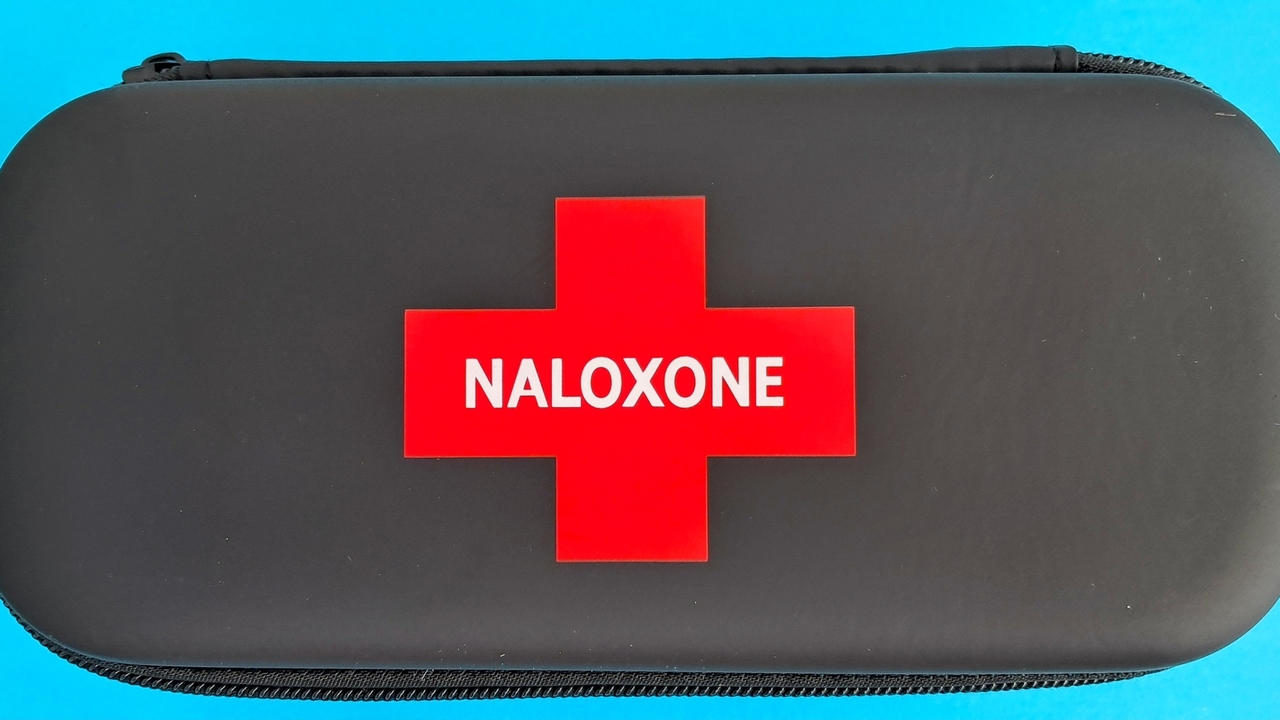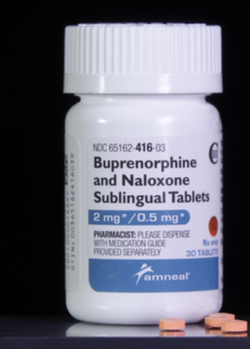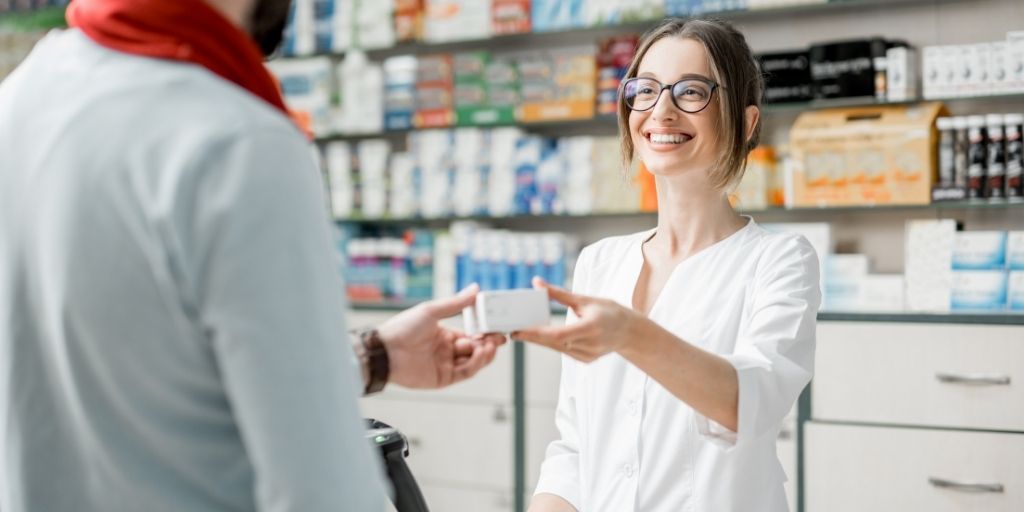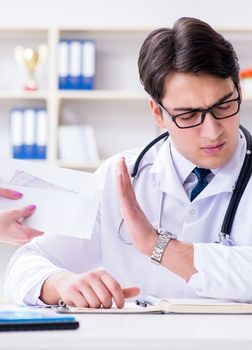
Iowa has recently launched the Save a Life With Naloxone initiative aimed at fighting the ongoing opioid epidemic through increased access to naloxone (Narcan). Naloxone is a fast-acting medication that can reverse the effects of an opioid overdose and save lives when used quickly.
The state of Iowa stresses that the safety of the state’s communities is at the forefront of this continued effort. The program ensures that naloxone is widely available to residents, first responders, schools, and community organizations to prevent overdose deaths and promote recovery.
How to Get Naloxone in Iowa
Through the program, eligible organizations can request naloxone products for people at risk of an opioid overdose. There are two different application tracks for organizations. One is for law enforcement agencies and non-EMS regulated fire departments, and the other is for Iowa organizations, businesses and schools.
Since NARCAN is now available over the counter, many community organizations and secondary distributors, such as school districts, healthcare providers, health departments, fire departments and law enforcement personnel, can apply to distribute it locally.
Secondary Distributors
Some secondary distributors can currently dispense the prescription medication Kloxxado, another FDA approved naloxone medication. However it should be noted that the Iowa Health and Human Services will stop supporting allocation in November of this year, focusing on future efforts on expanding naloxone and community education.
To simplify the process, Iowa HHS provides a public FAQ document outlining eligibility, distribution requirements, and best practices for overdose prevention.
The Bigger Picture
Naloxone programs like this one play a critical role in the nation’s opioid overdose response strategy. According to the CDC, more than 80,000 people in the U.S. died from opioid-related overdoses in 2024. Increasing naloxone access can mean the difference between life and death while individuals seek long term recovery through treatment or Narcotics Anonymous (NA) meetings.
Find Support Near You
If you or someone you love is struggling with opioid use, you are not alone. Search for NA Meetings near you on Narcotics.com or call 800-934-1582(Sponsored) today to take the next step toward recovery.

Native Appalachian author Barbara Kingsolver has opened a new center focused on women’s opioid recovery in Virginia. Kingsolver won the 2023 Pulitzer Prize for Demon Copperhead, a novel about Appalachia’s opioid addiction crisis.
Now she is opening Higher Ground Women’s Recovery Residence in Lee County, Virginia, which provides a stable home for women who are learning to live sober after release from incarceration or inpatient substance abuse treatment centers.
Witnessing the Devastation
As a native Appalachian who lives on a farm in southwestern Virginia, Kingsolver knows firsthand how the national opioid epidemic “has changed so much of the texture of this place.” She has witnessed the devastation wrought by the pharmaceutical industry’s targeting of central Appalachia with sales of falsely proclaimed addiction-resistant prescription painkillers.
In the author’s words, “They came to harvest our pain when there was nothing else left.”
Desperately Needed Recovery Services
In the process of researching for Demon Copperhead, Kingsolver delved deeply into the real life stories of individuals struggling with addiction and the loved ones who are often their caregivers.
The facility Kingsolver has opened in response to those stories, funded by proceeds from her Pulitzer-winning novel’s overwhelming success, offers desperately needed services to a region that has been ravaged by the opioid crisis.
Higher Ground fosters a safe and welcoming environment for healing from substance abuse, with private and semi-private bedrooms, a shared kitchen and a communal den. Perhaps most importantly, the center has helped to create a tight-knit support system of women who understand each other and the destructive impact of addiction on families and communities.
Figuring it Out Together
This past June, an audience gathered at the Lee Theatre in Pennington Gap, Virginia to celebrate the center’s opening. When Kingsolver invited current residents onstage to share their experiences, they were more interested in discussing the bonds they have forged with housemates and staff members.
35-year-old Syara Parsell, one of the center’s first residents, has already found work and enrolled in college classes. She says, “Together, we figure it out.” As Kingsolver says, in the end, the benefit to residents of the center “is not just sobriety, but belief in themselves.”
Finding NA Meetings
One of the best tools for achieving long-term recovery is meeting with like-minded people who are also sober.
You can find NA meetings in your area or call 800-934-1582(Sponsored) today.

Researchers at the Comprehensive Center for Pain and Addiction in Phoenix and the National Center for Wellness and Recovery in Tulsa have developed a new subatomic approach to stop fentanyl overdoses with a single dose. Their answer lies in NCWR-10, a newly created molecule designed as a new fentanyl overdose treatment.
The need is urgent. Opioid overdoses claimed over 50,000 American lives in 2024. The Drug Enforcement Administration reports that nearly 70% of those deaths involved synthetic opioids—especially fentanyl. Fentanyl’s strength makes it extremely dangerous in which even a trace amount is often fatal.
While current treatment options like naloxone can reverse overdoses, the protection doesn’t always last long enough.
A Promising New Molecule for Fentanyl Overdose Treatment
Here’s where NCWR-10 steps in. This promising new molecule fights opioid abuse by acting quickly and lasting longer than naloxone. NCWR-10 was originally synthesized by Don Kyle, a leading expert in drug design and CEO of the National Center for Wellness and Recovery in Oklahoma.
From there, it’s off to Arizona where researchers at the Comprehensive Center for Pain and Addiction in the University of Arizona conduct lab tests. Center director Todd Vanderah agrees that a single dose can save lives.
In mouse studies, NCWR-10 restored breathing as quickly as naloxone but for longer. It also acts on opioid receptors that can ease withdrawal symptoms. “This could make the treatment easier for people in crisis,” Vanderah stated.
A New Tool in the Fight Against Synthetic Opioids
Researchers are also testing NCWR-10 against powerful synthetics such as carfentanil and isotonitazine. Carfentanil is thousands of times stronger than morphine, and the first dose is often lethal. Isotonitazine is equally deadly. Standard treatments can reverse overdoses from these drugs, but only briefly.
The Tulsa and Phoenix teams hope NCWR-10 can provide longer protection and reduce relapse rates. If their molecule that fights opioid abuse can meet FDA requirements before going on to human trials, NCWR-10 can give medical staff and first responders a greater tool in the fight against the opioid crisis.
NCWR-10’s future looks promising, but if you or a loved one is struggling with narcotic or opioid addiction, immediate help is available through local NA meetings and treatment programs.
Call 800-934-1582(Sponsored) to get started now.

Naloxone Texas, a statewide program that’s part of the University of Texas at San Antonio’s Be Well Institute on Substance Use and Related Disorders to prevent opioid overdoses in Texas, is deploying a new service on Texas college campuses this fall. It’s aimed at universities and colleges throughout the Lone Star State and offers overdose response training and free naloxone for students, staff, and faculty.
Naloxone Can Save Lives
Naloxone is the generic of Narcan and rapidly reverses opioid-related overdoses. The drug can save a life when administered immediately after an overdose. The drug is similar to an EpiPen (epinephrine auto injector) or heart defibrillator in that trained bystanders can offer quick and effective life-saving measures before first responders arrive.
In response to a growing opioid crisis in Texas that inordinately affects young adults, Naloxone Texas will target community colleges, private and public universities, and trade schools.
Dr. Tara E. Karns-Wright is an assistant professor in the Department of Psychiatry and Behavioral Sciences at UT San Antonio and director of Naloxone Texas. She expressed gratitude to the Texas Legislature and Texas Health and Human Services for funding the effort to provide every college campus with the resources and knowledge to respond to opioid overdoses.
“We’re making this life-saving medication more accessible and helping everyone become first responders in moments that matter most,” she said.
How Naloxone Texas Works
Naloxone Texas will be participating in back-to-school events across the state. These include hosting events at campuses in San Antonio, Austin, and Houston. Local staff and students can sign up for free naloxone kits at these events. They can ask questions and learn how to use the kits to prevent and treat overdoses.
In addition to opioid overdose reversal kids, Naloxone Texas also makes available the following services to enrollees:
Evidence-based training services: There are virtual, on-demand teaching modules where participants learn to identify and respond to opioid overdoses. They can also understand the varied approaches to addiction treatment in general and how therapies are effective.
Naloxone distribution: Individuals and organizations may request free kits in bulk with an emphasis placed on areas where individuals are at high risk of overdose, as determined by county data.
Referrals to support services for adolescents and adults through the Be Well Texas Provider Network and the Be Well Clinic. Both offer in-person and virtual care for substance use issues. Referrals may also be given to NA recovery meetings throughout Texas.
Campus organizations, as well as student health services and college administrators, are urged to schedule customizable training workshops and request free naloxone kits by signing up here.
If you or someone you love is struggling with drug addiction, there is hope. Narcotics.com lists NA meetings around the nation, including online and virtual NA meetings.
For immediate support, call 800-934-1582(Sponsored) today.

Ed smokes five cigarettes a day and wants to quit. Peter has become dependent on opioids and wants to break his addiction. David is ready to give up alcohol, which has taken over his life. All three men are considering quitting cold turkey. They are ready to be done with their addictions, so they want to stop using the substance immediately. Does quitting cold turkey work?
Is this a good idea? It might be ok for Ed, but Peter and David may want to reconsider.
Depending on their history of use, quitting cold turkey may be a shock to their systems and cause withdrawal. General withdrawal symptoms can include:1
- Cravings
- Headaches
- Shaking
- Nausea
- Anxiety
- Sleep issues
- Appetite changes
- Agitation
- Concentration issues
- Sadness
Can You Die from Quitting Cold Turkey?
With certain substances, withdrawal effects can be severe or even life-threatening. The body has become dependent on the drug, and an abrupt “cold turkey” approach could be dangerous if the person doesn’t receive treatment.
Here’s a breakdown of what happens with various types of substances:
Nicotine
There are no serious health risks if Ed wants to quit smoking cold turkey. However, he may have better success if he does this with support. A study found that only 3-5% of individuals who tried to quit cold turkey without help achieved long-term abstinence from nicotine.2
Alcohol
David has severe alcohol dependency. If he quits cold turkey, there are severe health risks. Alcohol withdrawal can include delirium tremens (DTs). These can start within two days of stopping alcohol cold turkey and can last up to five days. Without appropriate treatment, the mortality rate for DTs can be as high as 37%.3
DT symptoms can include:4
- Hallucinations
- Loss of consciousness
- Severe confusion
- Extreme hyperactivity
- High blood pressure
- Seizures
- Disruptions to cardiovascular function
Opioids
Like David, Peter may be putting his life in danger if he abruptly quits opioids without treatment. Opioid withdrawal typically causes flu-like symptoms. This includes vomiting and diarrhea. If severe, these can cause dehydration, which can lead to chances of heart failure.5
Other Drugs
Other drugs, such as meth and benzodiazepines, can cause similar withdrawal symptoms, including seizures, dehydration, heart issues, and psychotic reactions.6 If untreated, these can be life threatening.
Alternatives to Quitting Cold Turkey
Fortunately, there’s good news for Peter and David (and Ed, too). To avoid these physical dangers of quitting cold turkey, and to increase their chances of long-term success, they can turn to an alternative method of quitting the substance.
Their options include:
Tapering
Rather than stop taking opioids all at once, David can partner with a physician or other healthcare provider to taper off the drug. This involves slowly reducing the amount he takes over time until he eventually stops taking opioids completely.
The length of time it takes to taper off a drug depends on how long you’ve been using it and how much you’ve been using. It can take a few weeks or a few months to complete this process, but it can provide a safer and more effective long-term solution than quitting cold turkey.
Medication
To quit smoking, Ed can use nicotine replacement therapy (NRT). He may choose patches, sprays, or gum to prevent withdrawal symptoms. One study found that NRT can increase the chances of successfully quitting smoking by up to 70%.4
Medications are also available to help stop or reduce alcohol use. The FDA has approved acamprosate, naltrexone, and disulfiram for the treatment of alcohol use disorder. Disulfiram and naltrexone alter how alcohol is processed in the body to make drinking less appealing, and acamprosate can help ease withdrawal symptoms.7
Several drugs are also FDA-approved for the treatment of opioid use disorder: naltrexone, buprenorphine, and methadone.8 The use of these medications to stop using drugs or prevent relapse is known as medication-assisted treatment (MAT).
Medical Detox
To safely withdraw from drugs or alcohol, David and Peter can find a medical detox program. During medical detox, medical professionals offer treatment for withdrawal symptoms and provide 24/7 supervision to prevent complications. This may include sedation or other medications to help David get through the most severe, initial phase.
Medical detox usually lasts several days. When it’s complete, David’s body will be cleansed of alcohol, and he can begin his life of recovery. Medical detox programs are available for all types of substances, so Peter can also choose this method to detox from opioids.
Social Detox
This method can involve quitting cold turkey, but it’s done with support. If Peter’s symptoms aren’t life-threatening, he may find a social detox program where he can be monitored by professionals and receive counseling to help him through his withdrawal symptoms. This method does not involve the use of medication.
Cold Turkey Support
If Ed, Peter, or David choose to go “cold turkey,” it’s crucial that they get support. This may include formal services such as the medical detox described above, but it can also include other types of support. Many resources are available, including:
- Counseling
- Smartphone apps
- Support groups
- Medication
- Drug rehab programs
Does quitting cold turkey work? The bottom line: Yes, quitting cold turkey can work, but depending on the substance, you may need additional support to do so safely and effectively.
If you or someone you love is experiencing a substance use disorder, help is available. Call 800-934-1582(Sponsored) today to learn about your treatment options.
Sources:
- Withdrawal management. (2009, January 1). NCBI Bookshelf. https://www.ncbi.nlm.nih.gov/books/NBK310652/
- World Health Organization: WHO. (2023, January 4). No level of alcohol consumption is safe for our health. World Health Organization: WHO. https://www.who.int/europe/news/item/04-01-2023-no-level-of-alcohol-consumption-is-safe-for-our-health
- Rahman, A., & Paul, M. (2023, August 14). Delirium tremens. NCBI Bookshelf. https://www.ncbi.nlm.nih.gov/books/NBK482134/
- Rowden, A. (2021, March 23). The risks and benefits of quitting “cold turkey.” Medical News Today. https://www.medicalnewstoday.com/articles/is-it-bad-to-quit-cold-turkey
- Yes, people can die from opiate withdrawal. (n.d.). NDARC – National Drug and Alcohol Research Centre. Retrieved March 1, 2024, from https://ndarc.med.unsw.edu.au/blog/yes-people-can-die-opiate-withdrawal
- Ashenafi, W., Mengistie, B., Egata, G., & Berhane, Y. (2021). The role of intimate partner violence victimization during pregnancy on maternal postpartum depression in Eastern Ethiopia. SAGE Open Medicine, 9, 2050312121989493. https://doi.org/10.1177/2050312121989493
- Medications for alcohol dependence. (n.d.). WebMD. Retrieved March 1, 2024, from https://www.webmd.com/mental-health/addiction/features/fighting-alcoholism-with-medications
- (DCD), D. C. D. (2018, April 18). How do medications treat opioid addiction? HHS.Gov. https://www.hhs.gov/opioids/treatment/medications-to-treat-opioid-addiction/index.html

Suboxone withdrawal is worse than heroin withdrawal.
No one has ever been able to successfully taper off Suboxone.
Tapering off Suboxone is something that’s shrouded in both mystery and myth. While the thought of stopping the medication certainly generates a bit of anxiety, the unknowns and “what ifs” are truly the drivers of fear. What will it feel like when your Suboxone dose is decreased? Will it feel like you’re in withdrawal 24/7? Will anyone help you if the taper is going too fast?
By answering the what ifs and shining a light on the unknowns, tapering off Suboxone suddenly becomes a lot less frightening. Once the fear is under control, you’re free to play a leading role in your own recovery process.
What is a Suboxone Taper?
 First thing’s first; let’s talk about what a Suboxone taper is and why it’s so important. Tapering is defined as gradually discontinuing or reducing the dose of a particular drug required by a patient over a prolonged period of time. Pay close attention to those last six words: “…over a prolonged period of time.”
First thing’s first; let’s talk about what a Suboxone taper is and why it’s so important. Tapering is defined as gradually discontinuing or reducing the dose of a particular drug required by a patient over a prolonged period of time. Pay close attention to those last six words: “…over a prolonged period of time.”
The process of tapering is, by definition, meant to be slow.
Suboxone is an FDA-approved medication that has changed the way opioid addiction is treated. Its unique combination of two distinctive chemical compounds – buprenorphine and naloxone – give it the ability to virtually eliminate opioid withdrawal symptoms and minimize the risk of abuse. It takes time to recover from opioid use disorders, so most patients take Suboxone for an extended period of time.
Since buprenorphine is a partial opioid agonist, it does carry a risk of dependency. Given this risk, when you’re ready to stop taking Suboxone, a supervised taper is always recommended.
Trying to quit “cold turkey” without assistance can be dangerous and cause painful withdrawal symptoms, both of which increase your odds of relapse. A supervised taper, on the other hand, significantly lowers or eliminates withdrawal symptoms and prepares your body for life beyond Suboxone.
What to Expect During a Suboxone Taper
The road to a successful Suboxone taper begins with open, honest dialogue between you and your clinician. From those conversations, you will work together to develop a plan to reduce the amount of Suboxone you take. The result is a tapering schedule that is highly individualized and focused on your personal needs instead of being focused on adherence to one specific approach.
Your dosage can be lowered a little bit at a time over several days, weeks, or even months. According to the National Alliance of Advocates for Buprenorphine Treatment (NAABT), Suboxone should generally be lowered in increments of 2 mg at a time every few days. Keep in mind, however, this progress relies on your level of dependence and individual experience. If you’re on a well-structured tapering schedule, you should only feel mild withdrawal symptoms for a few days following a reduction in dose.
If, at any point during the taper, your withdrawal symptoms or cravings become more intense, talk to your clinician. He or she can readjust your dose or slow the taper. You may need to go back to a previous dosage level in order to stabilize or increase the amount of time in between dosage reductions.
In some cases, a medication called Naltrexone may be used after you’ve tapered off Suboxone. Naltrexone is an opioid antagonist medication that works by blocking the effects of opioids. When used after the Suboxone tapering process, it offers additional anti-craving properties that can strengthen long-term sobriety. If used before the Suboxone taper is complete, however, Naltrexone can cause precipitated withdrawal.
Getting Help With Your Suboxone Taper
Some people might tell you that getting off Suboxone is impossible – that no one can handle the withdrawals or function without the medication. Thankfully, that isn’t true. With proper treatment and support, you can successfully taper off Suboxone.

10.1 million. That’s the estimated number of Americans aged 12 or older who misused opioids in 2019.
There were an estimated 75,673 opioid overdose deaths that occurred from April 2020 through April 2021.
What are we doing about these alarming statistics? The FDA has approved three drugs to treat opioid dependence. Buprenorphine – sold under the brand name Suboxone – is one of them.
Here’s how it works and what researchers have discovered.
Suboxone 101
 Suboxone is an opioid partial agonist. An agonist is a chemical that triggers a response in the body. This drug only partly activates rather than fully. So its effects are weaker than substances like heroin or morphine (which are full agonists).
Suboxone is an opioid partial agonist. An agonist is a chemical that triggers a response in the body. This drug only partly activates rather than fully. So its effects are weaker than substances like heroin or morphine (which are full agonists).
The drug also has a ceiling effect. This means higher doses don’t increase its effects. And, it’s long-acting, so people don’t have to take it every day.
This makes Suboxone a go-to drug for medication-assisted treatment (MAT) for opioid use disorder.
This medication can:
- Diminish the effects of physical dependency on opioids, such as withdrawal symptoms and cravings
- Increase safety (reduce the chances of overdose)
- Lower the potential for drug abuse
Ultimately, this can help people withdraw from opioids like heroin and reduce people’s use.
If it is taken as prescribed, buprenorphine is reported to be safe and effective.
How long someone takes buprenorphine varies with each case. Treatment can range from short-term to indefinite.
MAT 101
The US Department of Health and Human Services reports that 1.27 million Americans are now receiving medication-assisted treatment for opioid use disorder (OUD). This combines medication like buprenorphine with counseling and behavioral therapies. This creates a comprehensive treatment plan that treats the whole person.
Research has shown that this combination can successfully treat opioid use disorders and help sustain recovery.
SAMSHA states the ultimate goal of MAT is “full recovery, including the ability to live a self-directed life.”
Does It Work?
Researchers recently dug into results from drug tests to find out.
Brendan Saloner, PhD, is an associate professor at Johns Hopkins Bloomberg School of Public Health. Together with researchers from Millennium Health, he published their findings in JAMA Network Open.
These investigators analyzed 150,000 urine drug test results for OUD patients. The patients were prescribed Suboxone between 2013 and 2019. Researchers wanted to find out if the presence of Suboxone made it less likely for a person to misuse opioids.
Of their 150,000 results, 85.49 percent were positive for buprenorphine. Just under half (47.58 percent) were positive for at least one non-prescribed substance.
They discovered that patients who tested negative for prescribed buprenorphine “were significantly more likely” to test positive for other substances, compared to those who tested positive for buprenorphine.
Specifically, they found:
- Those who tested negative for buprenorphine were 10 times more likely to test positive for heroin.
- Those who tested negative for buprenorphine were seven times more likely to test positive for fentanyl.
In other words, the results indicate that if the patients stuck with their treatment, they were less likely to abuse other drugs. And, that if they stopped taking their medication, they were much more likely to turn to other drugs.
More Good News for Suboxone

Credit: Kzenon, Rido, Syda Productions, Victoria Ashman, Rawpixel.com, fizkes, Dragon Images, Simone Hogan
Other research supports the theory that Suboxone can be an effective treatment for addiction. One meta-analysis of buprenorphine use found that doses of this medication improved retention in treatment and that high doses reduced opioid use.
And through other research, MAT has been shown to:
- Increase treatment retention
- Increase patients’ ability to remain employed
- Decrease illicit opioid use and other criminal activity among those with SUDs
- Improve patient survival
Call 800-934-1582(Sponsored) to learn more about available treatment options near you.
 Tina and Melinda are both addicted to opioids. Both of these women are paying for suboxone treatment for their opioid use disorder.
Tina and Melinda are both addicted to opioids. Both of these women are paying for suboxone treatment for their opioid use disorder.
Tina has private insurance. Melinda has Medicaid coverage.
Which of these two women is more likely to get an appointment? Will providers discriminate when it comes to the method for paying for suboxone treatment?
That’s what researchers wanted to find out. So, they used “secret shoppers” to get answers.
Investigators from Baylor University’s Hankamer School of Business, RAND Corporation, and Vanderbilt University Medical Center’s Departments of Pediatrics and Health Policy collaborated on the study.
Here’s what they discovered.
It’s Hard for Anyone to Get an Appointment
 Researchers made 3,420 simulated patient calls for the study. The callers identified themselves as women with Medicaid coverage or private insurance coverage. All were requesting appointments with buprenorphine providers.
Researchers made 3,420 simulated patient calls for the study. The callers identified themselves as women with Medicaid coverage or private insurance coverage. All were requesting appointments with buprenorphine providers.
Guess how many successfully landed an insurance-covered appointment? Less than half. Even with Medicaid or private insurance.
Only 45 percent of women with private insurance coverage were able to get an appointment. And just 38 percent of women with Medicaid insurance were as well.
According to the study’s lead author Michael Richards, MD, PhD, MPH, and associate professor at Baylor University in Waco:
The most striking finding is — for both callers that had private insurance and callers that had Medicaid — just how infrequently they’re able to actually leverage those insurance benefits when it comes to getting an appointment for opioid use disorder. That really speaks to the many serious and substantive access hurdles these individuals have to clear.
It’s Harder for Medicaid Patients…in Certain Areas
Previous research has shown significant differences in access to opioid use disorder treatment between patients with Medicaid versus private insurance. And this study was no different.
However, researchers discovered that these results varied based on one key factor.
Researchers found that callers with Medicaid were 11 percent less likely to get an appointment if Medicaid coverage was not common in the surrounding community.
But, as the percentage of Medicaid coverage in the local community went up, so did the number of Medicaid patients getting appointments.
In areas where Medicaid coverage was prevalent enough, the difference in access to care was insignificant.
Causes of Discrimination in Paying for Suboxone Treatment
Investigators can’t say for sure what is causing this disparity. They suspect it might be as simple as paperwork issues.
According to the study findings, providers in areas with a higher rate of Medicaid coverage may be more familiar with business processes needed to obtain payment from Medicaid for buprenorphine treatment.
But the problem is most likely multifaceted, they admit.
Whatever the issues are, researchers suggest that these findings guide future efforts. They advise, “Efforts to improve access to treatment may be best targeted to areas where Medicaid prevalence is lower.”
MAT Numbers Remain Low
 In 2020, nearly 70,000 people in the United States died from opioid overdoses. Currently, buprenorphine is one of three medication-assisted treatments (MAT) approved by the World Health Organization and the FDA to treat opioid use disorder. This medication can help diminish withdrawal symptoms and cravings.
In 2020, nearly 70,000 people in the United States died from opioid overdoses. Currently, buprenorphine is one of three medication-assisted treatments (MAT) approved by the World Health Organization and the FDA to treat opioid use disorder. This medication can help diminish withdrawal symptoms and cravings.
This, in turn, lowers the potential for opioid misuse.
The number of clinicians who can prescribe buprenorphine has increased 300 percent. But less than 33 percent of individuals with opioid use disorder receive any kind of MAT. Researchers hope their efforts can make a change in these numbers.
“Making it through the structural barriers to just getting into treatment for opioid use disorder is extraordinarily hard, even if you’re the most motivated person on the planet,” says study principal investigator Stephen Patrick, MD, MPH. He’s from the department of health policy at Vanderbilt University Medical Center in Nashville, Tennessee.
“We are seeing record-setting rates of overdose death, and for every overdose death, there are a slew of other hospitalizations and additional family members affected. I hope our continued research garners the attention of the public and policymakers and more clearly communicates that we must put solutions in place to break down these barriers.”
Call 800-934-1582(Sponsored) now to learn more about the available treatment options in your area.
 Medication-assisted treatment (MAT) has been a life-saving tool for so many people with opioid use disorder. In fact, the most popular medication used in MAT—Suboxone (buprenorphine/naloxone)—is approved and endorsed by the Substance Abuse and Mental Health Services Administration (SAMHSA), the Federal Drug Administration (FDA), and the National Institute on Drug Abuse (NIDA).
Medication-assisted treatment (MAT) has been a life-saving tool for so many people with opioid use disorder. In fact, the most popular medication used in MAT—Suboxone (buprenorphine/naloxone)—is approved and endorsed by the Substance Abuse and Mental Health Services Administration (SAMHSA), the Federal Drug Administration (FDA), and the National Institute on Drug Abuse (NIDA).
Thousands of people say Suboxone literally changed their lives for the better. Surely we’d never see patients facing barriers and stigma related to such a well-researched and highly-endorsed medication – not in this day and age, right?
Wrong.
Despite all the supporting literature and data, clinicians hear horror stories on a weekly basis – stories about pharmacies preventing access to recovery by turning away patients presenting Suboxone prescriptions.
So, what’s the deal?
What is Medication Assisted Treatment?
 Medication-assisted treatment (MAT) is the use of medications, in combination with behavioral therapies, to treat opioid addiction and alcohol dependence. These medications are critical because over two million Americans live with opioid use disorder, which includes prescription opioids and illicit drugs, like heroin.
Medication-assisted treatment (MAT) is the use of medications, in combination with behavioral therapies, to treat opioid addiction and alcohol dependence. These medications are critical because over two million Americans live with opioid use disorder, which includes prescription opioids and illicit drugs, like heroin.
According to SAMHSA, these medications can relieve withdrawal symptoms and reduce the psychological cravings that cause chemical imbalances in the body. MAT also helps to normalize brain chemistry, block the euphoric effects of alcohol and opioids, and normalize body functions without opioid use.
There are three main types of MAT that can be prescribed by a medical provider:
- Medications for alcohol use disorder: the medications used to treat alcohol dependence include acamprosate, disulfiram, and naltrexone.
- Medications for opioid dependence (also called opioid use disorder): these medications include buprenorphine, methadone, and naltrexone
- Opioid overdose prevention medication: naloxone (commonly called its brand name, Narcan) is an opioid overdose drug that can be used to reverse the effects of opioids and save someone’s life.
How Effective is MAT?
MAT is clinically proven to be an effective treatment, with a number of positive outcomes. These medications:
- Reduce the need for detox
- Provide a comprehensive, but tailored, program combining therapy and medication that addresses most patients’ needs
- Improve patient survival
- Decrease illicit opioid use
- Decrease criminal activity
- Improve retention in treatment programs
- Increase a person’s ability to gain and sustain employment
- Improve birth outcomes among pregnant mothers with opioid use disorder.
Why Do Pharmacies Prevent Access to Recovery?
Given how effective and well-endorsed medication-assisted treatment is, you’d think that pharmacies would be happy to stock their shelves with more of the medications (and increase their bottom line). Instead, recent studies have shown that some pharmacies are refusing to stock one medication: buprenorphine.
In a recent AMERSA podcast (The Multidisciplinary Education and Research in Substance Use and Addiction), Dr. Jeffrey Bratberg and his colleagues decided to test the availability of MAT by hosting a phone-based “secret shopper.”
Bratberg, with researchers Dr. Lucas Hill, and Dr. Lindsey Loera, surveyed 800 pharmacies licensed by the state of Texas for the distribution of MAT. During their “secret shopper” experiment, Bratberg and colleagues asked pharmacies for the availability of the most prescribed MAT product, buprenorphine 8/2mg films. When medications were unavailable, researchers asked when it would come back in stock and also asked about the availability of naloxone.
The findings were pretty alarming.
Bratberg and colleagues discovered that:
- Only 34 percent of pharmacies were willing to fill one week of buprenorphine and a naloxone kit
- Chain stores were more likely than independent pharmacies to fill Suboxone prescriptions
- Prescribing just one medication (buprenorphine) didn’t make a big difference, with 42 percent agreeing to fill the prescription
- Even if the medication was out of stock, only 62 percent of pharmacies were willing to order it (and it took more than two days for Suboxone delivery)
- Some pharmacists simply refused to dispense Suboxone altogether
Digging Into Each Pharmacy’s Excuses in Preventing Access to Recovery
 Researchers wanted to understand why the medication was out of stock and why pharmacists were so unwilling to prescribe an FDA-approved medication and therefore prevent access to recovery.
Researchers wanted to understand why the medication was out of stock and why pharmacists were so unwilling to prescribe an FDA-approved medication and therefore prevent access to recovery.
Bratberg and colleagues found the reasoning was simple: stigma and misconceptions.
Some pharmacists held misconceptions, believing MAT could cause euphoria or even lead to misuse. They essentially believed that, since it was an opioid, patients would use it to get high – even though that has been scientifically refuted. Other pharmacists pointed to cost issues saying that they could lose money if they had an excess supply on hand.
Critics say that the pharmacists’ perspectives are grounded in misconception and flawed arguments. Here’s why: Bratberg and colleagues pointed out in the podcast that surely all of these pharmacists had a supply of a highly addictive opioid, oxycodone, meaning the pharmacists’ reasoning was ill-founded.
Unfortunately, the lack of supply issues for MAT isn’t limited to Texas. A similar study in Kentucky found that pharmacists were terrified of DEA involvement. That reasoning does have more of a basis as wholesalers have been criticized for their part in the opioid epidemic by not reporting large orders of opioid medication.
Clearly the reasons that pharmacists prevent access to recovery are nuanced and Bratberg and colleagues say that the reasoning is complex and there needs to be a multidisciplinary approach that finds solutions and enables pharmacists to collaborate with other pharmacists, policy makers, and other MAT providers.
For information about treatment options for you or a loved one, call 800-934-1582(Sponsored) today.

The opioid epidemic has been raging a deadly war in the United States for over two decades.
In the late 90s, Big Pharma readily reassured doctors that their patients would not become addicted to opioid pain relievers, so they started doling out prescriptions at greater rates than ever before. Unsurprisingly, this led to widespread misuse of these highly dangerous medications (e.g. natural and semi-synthetic opioids and methadone), and overdose rates began to steadily increase.
Flash forward twenty years and, and this avoidable plague has only gained momentum. In 2019 alone, over 10 million Americans misused opioids, with significant increases in overdose deaths involving synthetic opioids, particularly fentanyl. Today, synthetic opioids are now the most common drugs involved in drug overdose deaths in the United States.
While the mortality related to opioid addiction has reached epidemic levels, we have also seen a massive uptick in the number of individuals seeking treatment.
What is Medication Assisted Treatment?
Three million American citizens have had or currently suffer from opioid use disorder (OUD), and more than 500,000 in the United States are dependent on heroin.
 Medication-assisted treatment (MAT) uses a combination of prescription medications, counseling, and behavioral therapies to treat opioid addiction, sustain recovery, and prevent overdose.
Medication-assisted treatment (MAT) uses a combination of prescription medications, counseling, and behavioral therapies to treat opioid addiction, sustain recovery, and prevent overdose.
Medications for opioid use disorder, also known as MOUD, have been shown to reduce the risk of fatal overdoses by approximately 50%. Furthermore, studies have found that MOUD is also effective at reducing the risk of nonfatal overdoses, which can be highly traumatic and medically dangerous.
In the face of the United State’s harrowing drug epidemic, one of the primary addiction recovery methods for medication-assisted treatment is a prescription drug called Suboxone.
What is Suboxone and How Does it Work?
Since its FDA approval in 2002, Suboxone has become one of the most commonly used medication-assisted treatments for opioid addiction. Also known under the brand names Bunavail or Zubsolve, Suboxone contains two primary active substances:
- Buprenorphine is a long-acting opioid used to replace the shorter-acting, more addictive opioids that many drug users become addicted to (e.g., heroin, oxycodone, fentanyl or hydromorphone). When taken at the correct dosage, it blocks opiate receptors in the brain to provide relief from cravings and withdrawal symptoms without causing the person to feel high (euphoric) or sleepy.
- Naloxone, also known under its brand name Narcan®, is a medication used to reverse opioid overdose. When combined with buprenorphine, however, it acts as an antagonist; it enhances the opioid-blocking properties of buprenorphine while discouraging misuse. Therefore, if a drug user were to crush and snort a tablet of Suboxone, the added naloxone will block opioids from the brain’s receptors and prevent any sort of high from occurring.
When combined with supervised medical care and therapeutic treatment, Suboxone is considered a highly effective treatment for opioid use disorder.
Suboxone Dosages
Suboxone is an oral medication that can be administered sublingually (placed under the tongue) or buccally (between your gums and cheek) as a single daily dissolvable dose.
It’s offered in the following four dosages:
- 12 mg buprenorphine with 3 mg naloxone
- 8 mg buprenorphine with 2 mg naloxone
- 4 mg buprenorphine with 1 mg naloxone
- 2 mg buprenorphine with 0.5 mg naloxone
Most people use heroin, fentanyl, and prescription opioids multiple times a day, whereas a single daily dose of buprenorphine is long-lasting, limiting exposure to potentially lethal illicit opioids.
Common Side Effects of Suboxone
Suboxone treatment for opioid use disorder can include a number of side effects, the most severe of which are caused by Suboxone’s status as a partial opioid agonist (i.e. the presence of buprenorphine in the compound).
According to the drug manufacturer, common side effects of Suboxone can include:
- Nausea and vomiting
- Headache
- Sweating
- Numb mouth
- Constipation
- Painful tongue
- Dizziness and fainting
- Problems with concentration
Treatment Plans
While treatment approaches vary depending on the addiction recovery center you or your loved one attends, there are typically four main steps in the Suboxone treatment process:
 Step 1 → New patient intake
Step 1 → New patient intake
This typically includes a medical and psychosocial evaluation, drug screen, and blood tests to ensure you’re a viable candidate for Suboxone- Step 2 → Induction
This phase involves a transition from a user’s current opiate intake to Suboxone, with the aim of minimizing “cold turkey” withdrawal symptoms - Step 3 → Stabilization
This phase begins after a person has discontinued or greatly reduced their drug use, no longer has cravings, and has few or no side effects. Suboxone is adjusted to the lowest dose to suppress withdrawal symptoms to allow for eventual tapering off and discontinuation of treatment - Step 4 → Long-term maintenance
If you or a loved one suffers from a severe opioid addiction, then ongoing, medically supervised treatment of Suboxone and therapeutic support may be required. Consult with a medical professional for more details.
Get the Help You Need
Get help today at 800-934-1582(Sponsored) to learn about treatment programs for drug and alcohol addiction.
